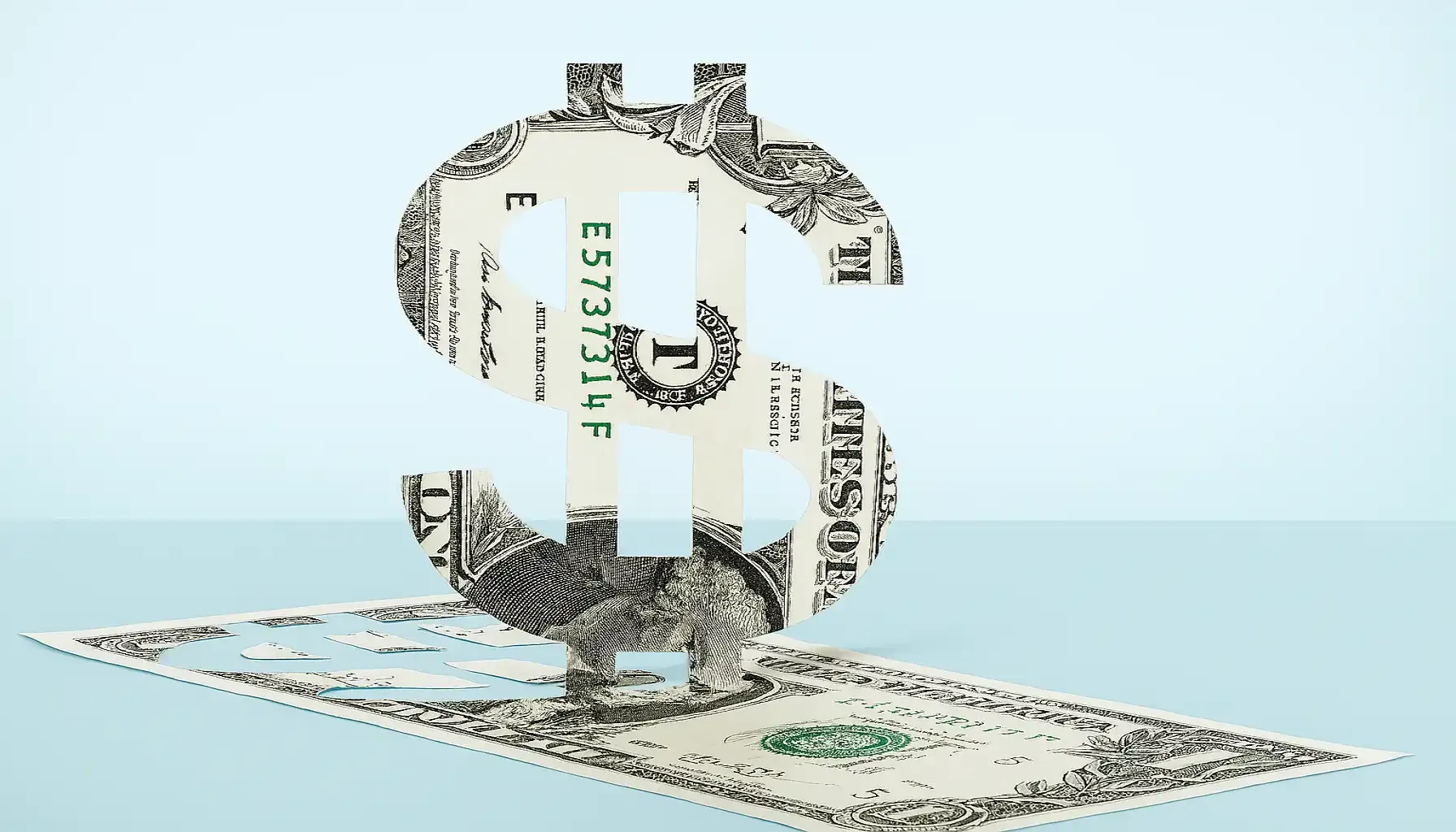Contents:
The only thing all people have and share is memories, but their forms and channels of representation differ dramatically. In the sphere of numismatics, certain coins refer to significant historical occasions, as well as figures that might have shaped our past. One dollar coin 1776 to 1976 is a great example of how the monetary industry may pay tribute to the nation’s rich history, i.e., the bicentennial of American independence.
What does this creation look like? What makes a 1776-1976 Eisenhower dollar rare? Why does it come in two major varieties, i.e., one in silver and one in copper-nickel? How can we check coin value and not fall into the trap of malevolent traders at last? Explore the peculiar background of this numismatic creation and start building your collection with confidence and ease!
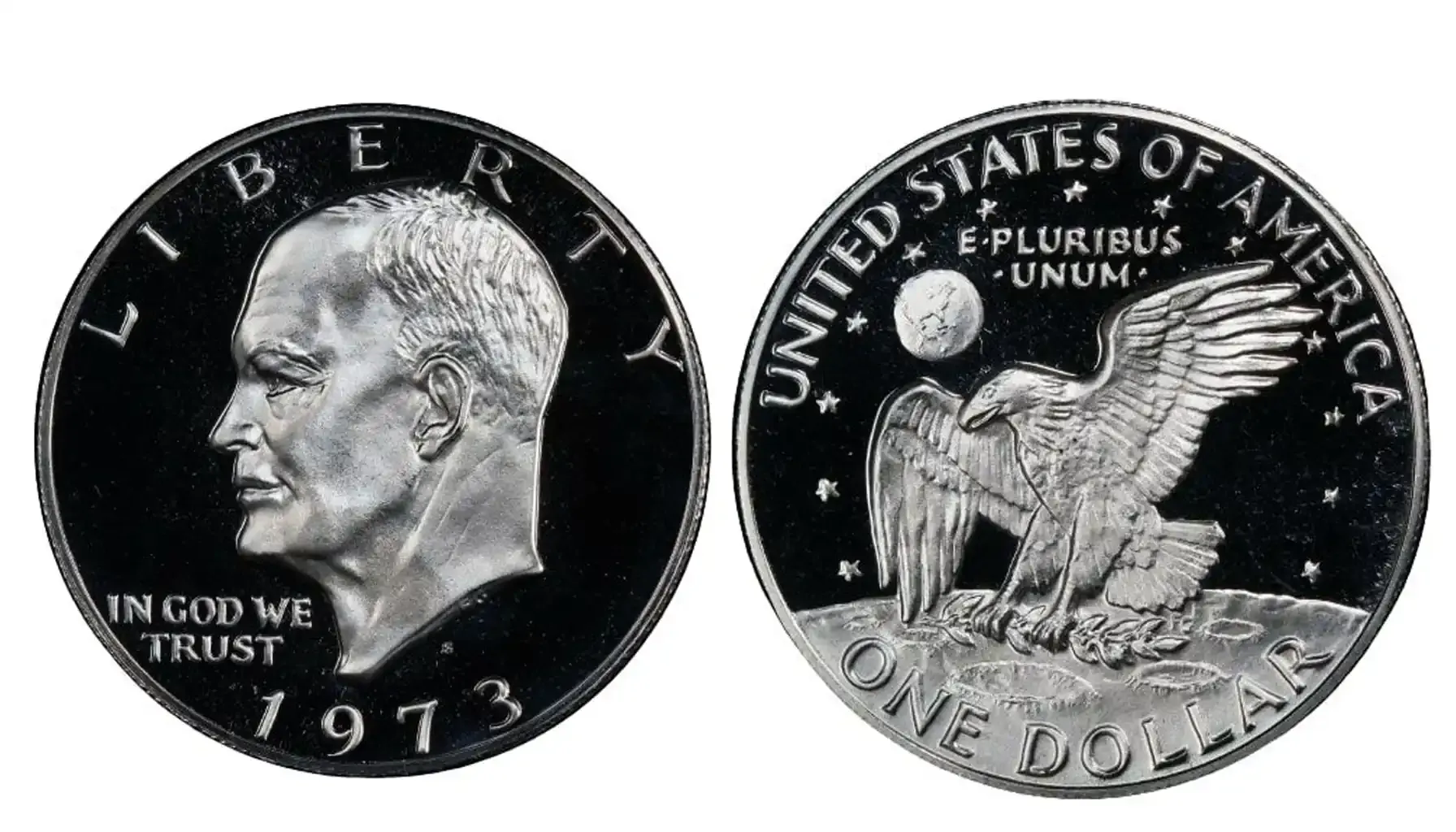
Coin Type | Mint Mark | Variety | Composition | Finish |
1976 Type 1 | No Mint | Type 1 | Copper-Nickel | Business Strike |
1976 Type 2 | No Mint | Type 2 | Copper-Nickel | Business Strike |
1976-D Type 1 | D | Type 1 | Copper-Nickel | Business Strike |
1976-D Type 2 | D | Type 2 | Copper-Nickel | Business Strike |
1976-S Clad Type 1 | S | Type 1 | Copper-Nickel | Proof |
1976-S Clad Type 2 | S | Type 2 | Copper-Nickel | Proof |
1976-S Silver | S | - | 40% Silver | Business Strike |
1976-S Silver (Proof) | S | - | 40% Silver | Proof |
1976 Silver Type 2 | None | Type 2 | 40% Silver | Proof |
The Bicentennial Dollar: Briefly about Its History
In 1976, the United States celebrated the 200th anniversary of the signing of the Declaration of Independence, which was vividly commemorated by a dedicated instance known as the Bicentennial 1776-1976 dollar coin. This type of recognition of American history and identity went beyond being a national holiday. Towns and cities all around the nation arranged parades, reenactments, and fireworks.
In 1973, Congress authorized a special batch of circulating coins to make the celebration available to everyone. Commemorative designs have been introduced to the quarter, half dollar, and dollar coins for the first time ever since 1926. Already featured on this conspicuous unit of currency, the image of President Dwight D. Eisenhower turned into a fine representation of American might and post-war success. This is what the US always looked like and meant to be!
Related articles: Is the 1776 to 1976 Quarter Dollar a Good Investment?
It was a uniting emblem of the nation's constant commitment to liberty and progress during a period of social and political upheaval, with millions of pieces produced. In 1975 and 1976, these instances, released by three major mints, i.e., Philadelphia, Denver, and San Francisco, went into circulation as cash and patriotic souvenirs.
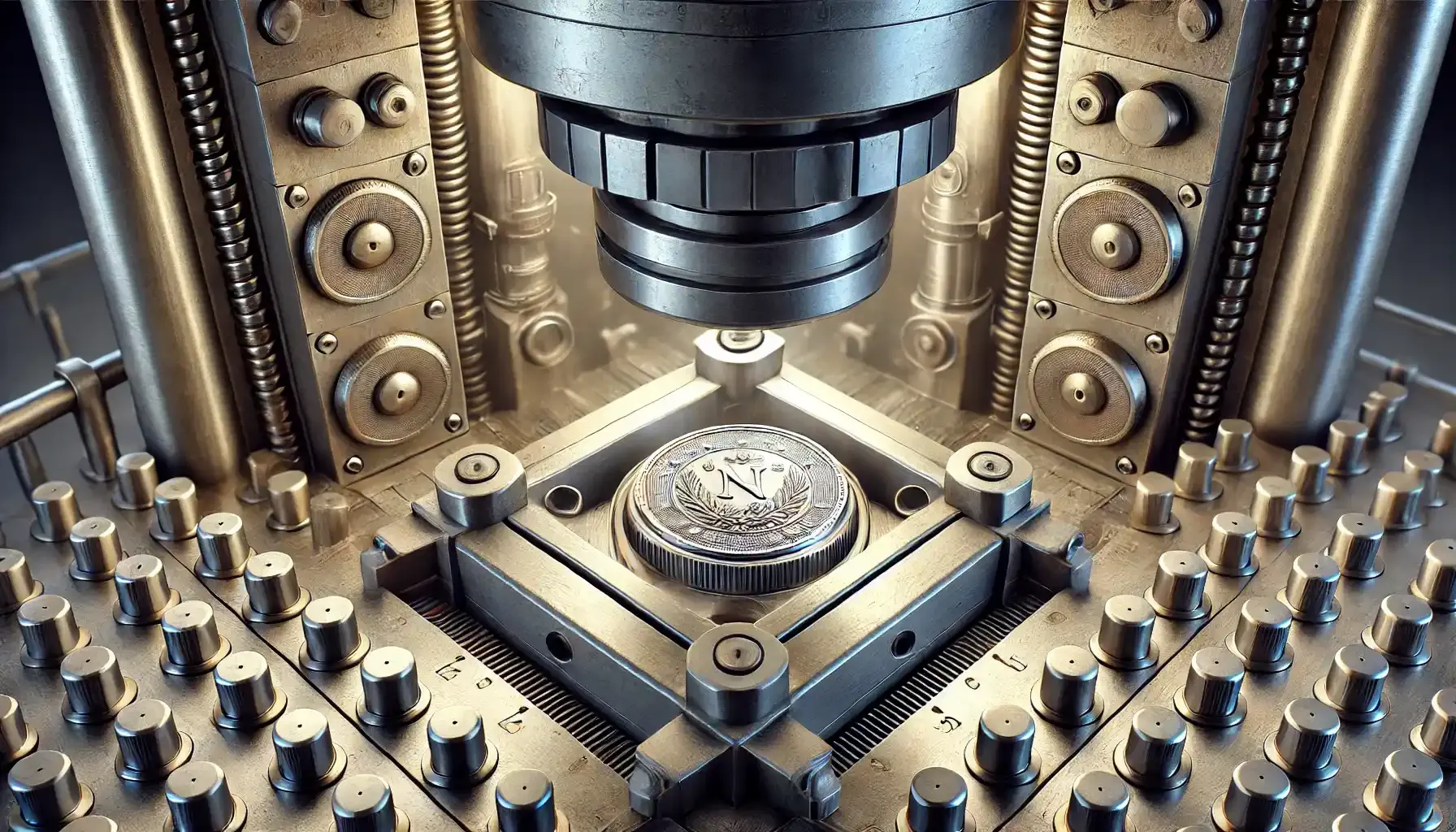
Philadelphia (No Mint Mark)
Type I: 4,019,000
Type II: 113,318,000
Type II Silver: 1*
Denver (D Mint Mark)
D Type I: 21,048,710
D Type II: 82,179,564
San Francisco (S Mint Mark) – Clad
S Clad Type I (Proof): 2,845,450
S Clad Type II (Proof): 4,149,730
San Francisco (S Mint Mark) – Silver
S Silver (Uncirculated): 11,000,000
S Silver (Proof): 4,000,000
*Although all silver proofs were meant to be minted in San Francisco, trial pieces managed to be produced in Philadelphia, which is why they lack the traditional proof-specific “S” mint mark!
The Design of the Bicentennial Dollar
Unlike regular Eisenhower 1-dollar coins, the Bicentennial versions had a different, exquisitely crafted design with dual dating and two compositions available. How was the design selected? As such, it was the public who was invited to take part in this procession by engaging in a nationwide competition to choose new reverse designs. A 22-year-old art student, Dennis R. Williams, managed to create an outstanding design that included the Liberty Bell superimposed over the moon.
The design of the one dollar coin 1776-1976 represents a stunning fusion of passion and historical significance. Although the obverse design was pretty much the same, the date was modified to the twin inscription "1776-1976" to honor the Bicentennial. On the reverse side, though, there could be noticed the Williams' image of the Liberty Bell superimposed over the Moon. Here is what we can say about its main characteristics.
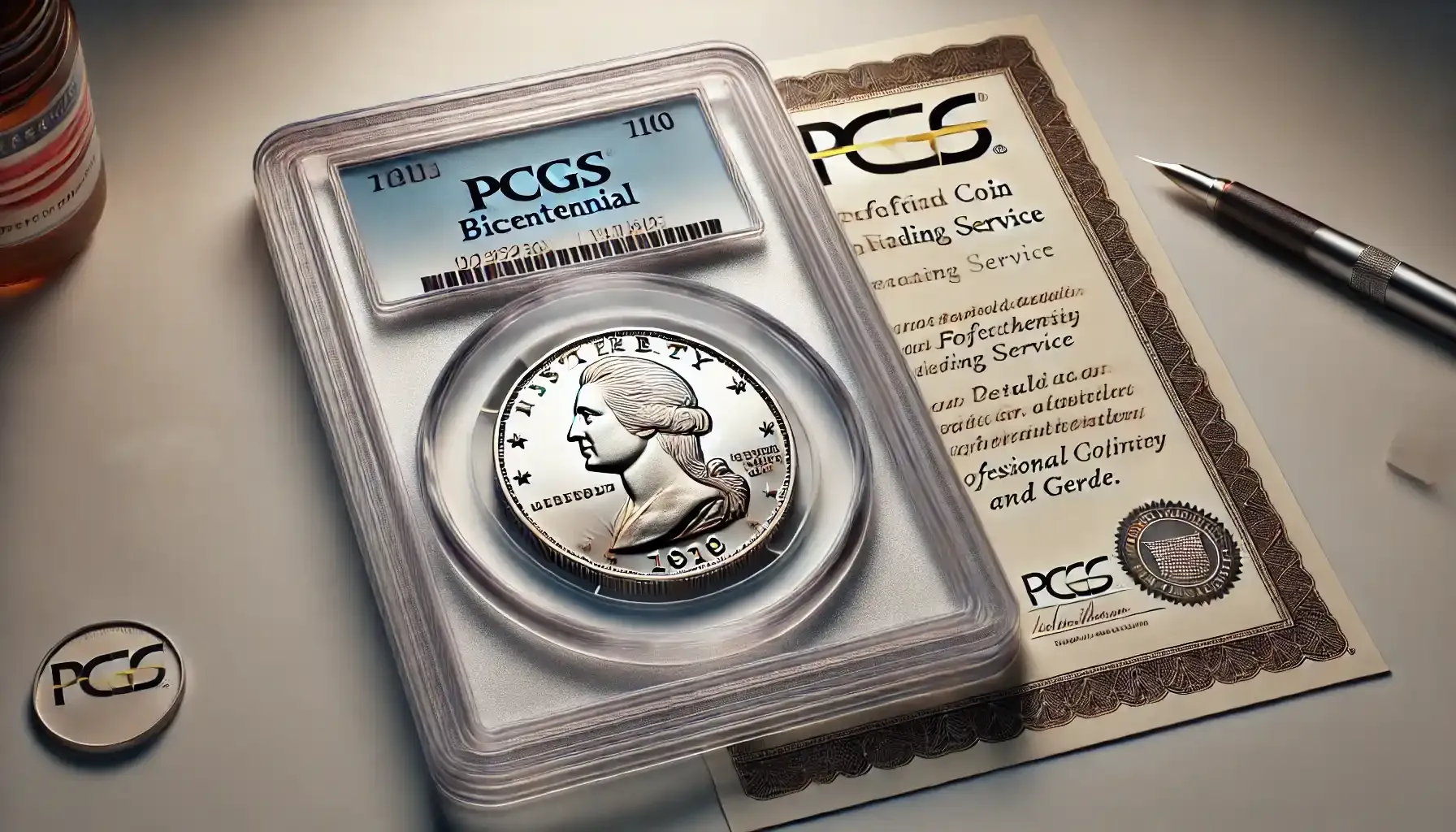
An interesting fact! There exist two major types of the coin (Type I and Type II), which can be distinguished by the lettering style (the only characteristic). While Type I has bold, blocky lettering, Type II features thinner, more refined, and sharply detailed inscriptions.
Features of the Bicentennial Dollar | |
Obverse (Front) | The portrait of President Dwight D. Eisenhower, designed by Frank Gasparro, with the inscriptions “LIBERTY” along the upper rim, “IN GOD WE TRUST” to the left of the profile, the years “1776-1976” beneath, and a mint mark above the date |
Reverse (Back) | The design by Dennis R. Williams featuring the Liberty Bell over the Moon, as well as the inscriptions “UNITED STATES OF AMERICA” along the upper rim, “E PLURIBUS UNUM” to the right of the bell, and “ONE DOLLAR” along the bottom edge |
Dual Date | “1776-1976”, which is to mark the 200th anniversary of American independence |
Edge | Reeded edge |
Mint Marks | No mark for Philadelphia “D” for Denver “S” for San Francisco |
Composition | Circulation strikes: Copper-nickel clad Collector versions: 40% silver clad |
Diameter | 38.1 mm |
Weight | 22.68 grams for copper-nickel 24.6 grams for silver versions |
The Bicentennial dollar is one of the most remarkable coins in American numismatic history, for it combines classic and contemporary symbols at the same time. Anyway, the coins are tiny creations that still may be missed. What else should we know about these dollars?
Should you wish to find out what the oldest coin in the world is, try checking it out in our blog.
What Is a 1776-1976 Eisenhower Dollar Worth? Values by Type
Philadelphia (No Mint Mark)
Philadelphia-minted dollars carry no mint mark and come in both Type I and Type II reverse varieties. They were struck for circulation and are made of a copper-nickel clad composition (except for the Silver Type II, which was produced as a presentational piece by the Philadelphia Mint). While generally common, high-grade examples can be quite valuable, since they were not preserved on purpose at first.
Type | Circulated | MS60–MS64 | MS65+ | Auction Record |
1976 Type I | $1.25–$3 | $4–$10 | $15+ | $7,638 |
1976 Type II | $1.25–$3 | $4–$12 | $18+ | $10,800 |
1976 Silver Type II | – | – | – | – |
Denver (D Mint Mark)
Denver struck two major Bicentennial dollar types, i.e., Type I and Type II, all bearing the 'D' mint mark. These are also copper-nickel clad business strikes, widely circulated, and more common than Philadelphia issues. All in all, just like in the previous case, these have never been intentionally preserved, which is why the uncirculated (or almost uncirculated) pieces are even more valuable than the rest.
Type | Circulated | MS60–MS64 | MS65+ | Auction Record |
1976-D Type I | $1.25–$3 | $4–$10 | $20+ | $14,375 |
1976-D Type II | $1.25–$3 | $4–$12 | $18+ | $5,060 |
San Francisco (S Mint Mark) – Clad
San Francisco struck proof-only clad issues for collectors, available in both Type I and Type II varieties as well. Anyway, thanks to the aura and circumstances that had surrounded them, these can bring wealth to those who are lucky enough to own them. High-grade examples, particularly certified PR70, can turn into the source of significant value at the most reputable coin auctions, in fact.
Type | PR60–PR64 | PR65–PR69 | PR70 | Auction Record |
1976-S Clad Type I | $4–$8 | $10–$25 | $150+ | $25,300 |
1976-S Clad Type II | $4–$8 | $10–$25 | $140+ | $22,550 |
San Francisco (S Mint Mark) – Silver
San Francisco also produced 40% silver Eisenhower dollars in both uncirculated and proof formats, sold through special collector sets only (although occasional separate pieces may appear on the market someday). These contain actual silver, which makes them a stable investment with constantly rising precious metals rates. While many remain in good condition due to careful handling, premium examples in high grades can be worth thousands.
Type | Circulated | MS60–MS64 / PR60–64 | MS65+ / PR65+ | Auction Record |
1976-S Silver (Uncirculated) | $4–$8 | $10–$20 | $30+ | $20,800 |
1976-S Silver (Proof) | – | $8–$15 | $25+ | $6,900 |
The 1776 to 1976 Dollar Error List: A Collector’s Guide
Doubled Die Reverse (DDR)

Estimated Value: $2,499
A DDR, or Doubled Die Reverse, occurs when the reverse die is improperly manufactured, which produces doubled images on the reverse lettering, especially noticeable in “UNITED STATES OF AMERICA” and “ONE DOLLAR”.
How to Identify: Strong doubling at the reverse text, especially under magnification
D Filled Mint Mark
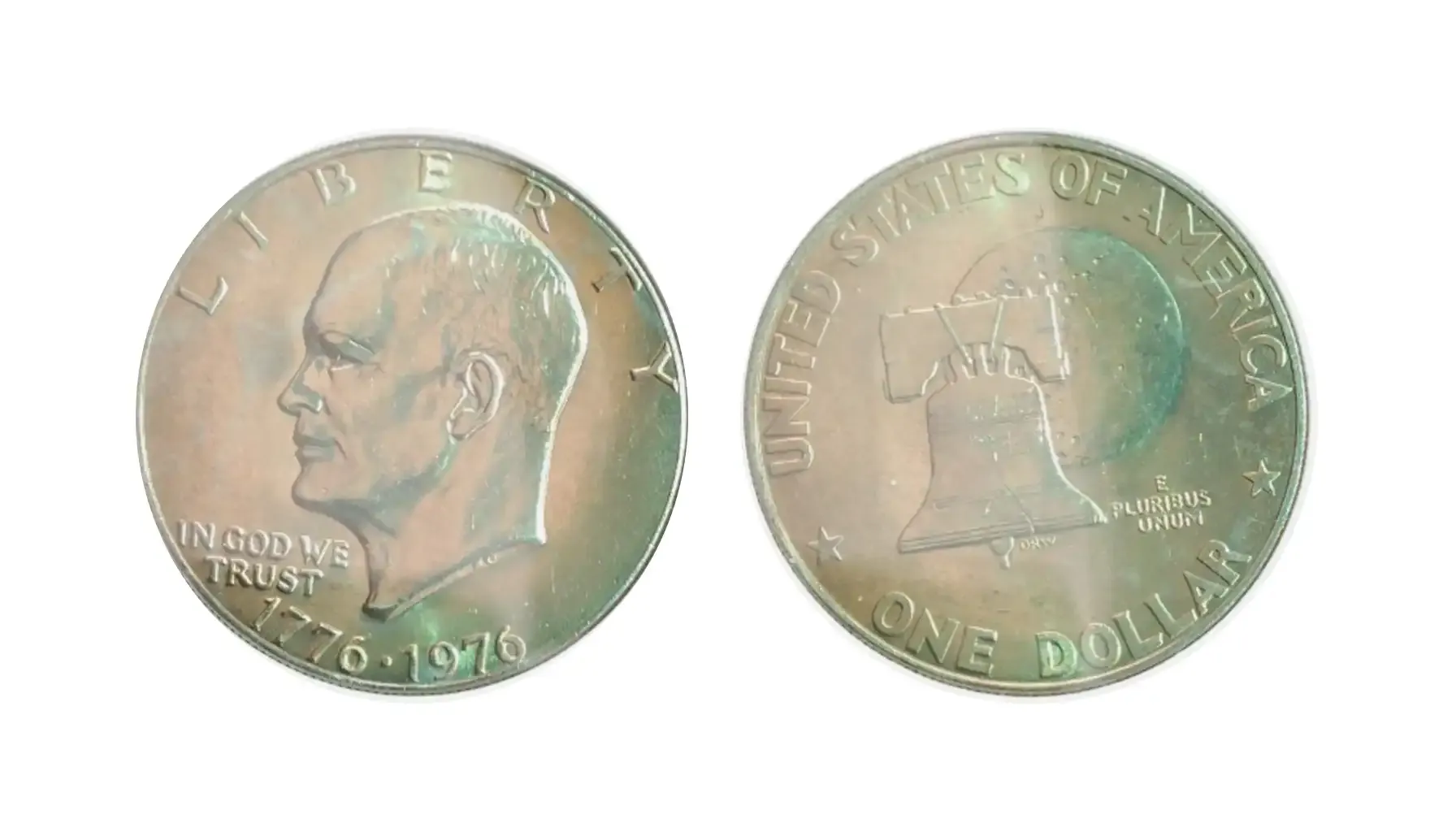
Estimated Value: $2,450
Another deviation refers to the filled mint mark, “D” in particular. This happens when debris partially fills the mint mark die, leading to a distorted or completely filled-in "D" mint mark on the obverse side.
How to Identify: An unclear, thick, or blob-like "D"
Lamination Error
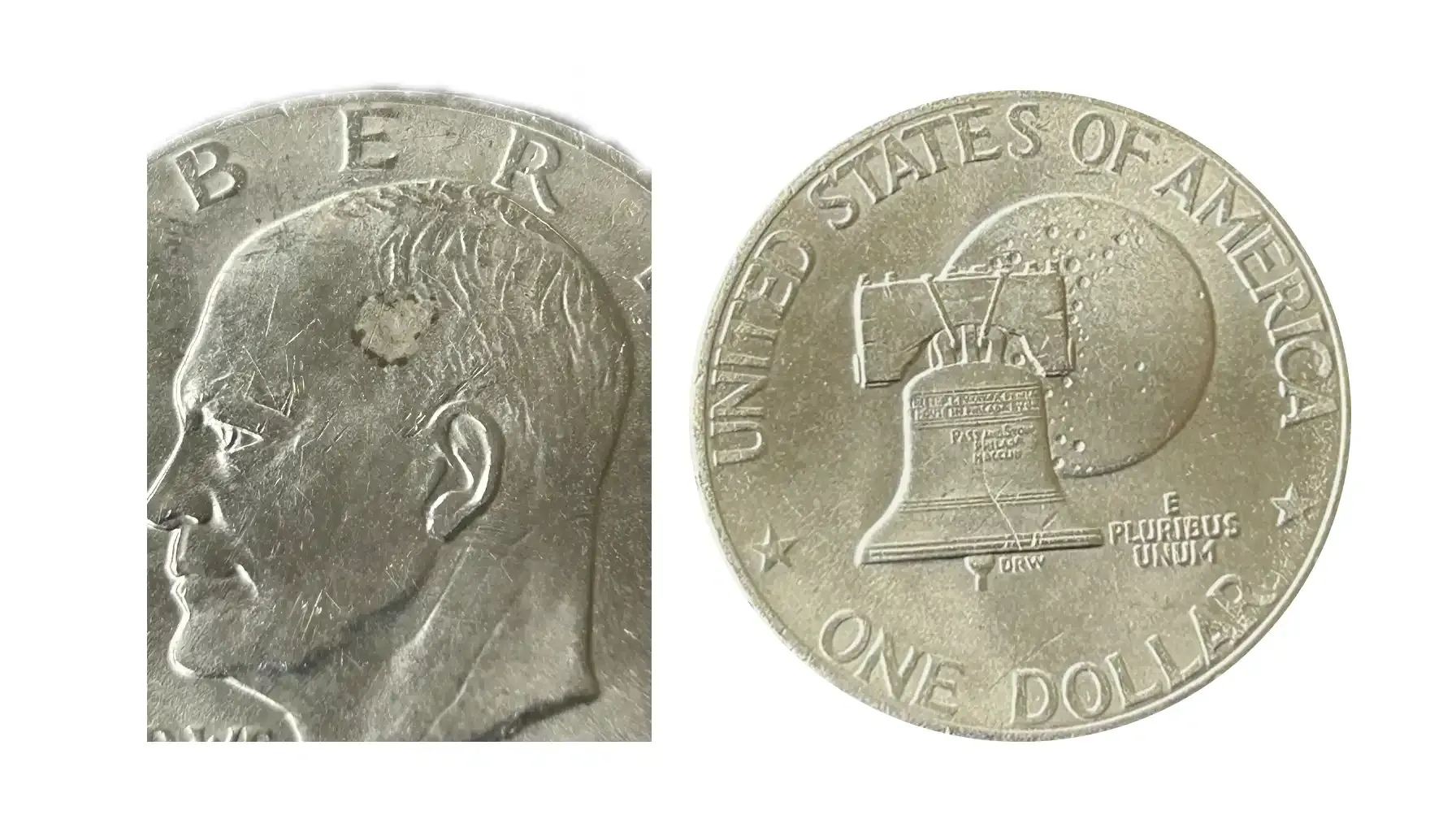
Estimated Value: $2,000
When the surface seems inconsistent, this may refer to a lamination error caused by impurities or weak bonding in the metal strip. As a result, the coin may bear a flaking or peeling surface, which is still valuable and appealing to collectors.
How to Identify: Peeling metal, cracks, or surface bubbles
Mis-Stamped / Off-Center Strike
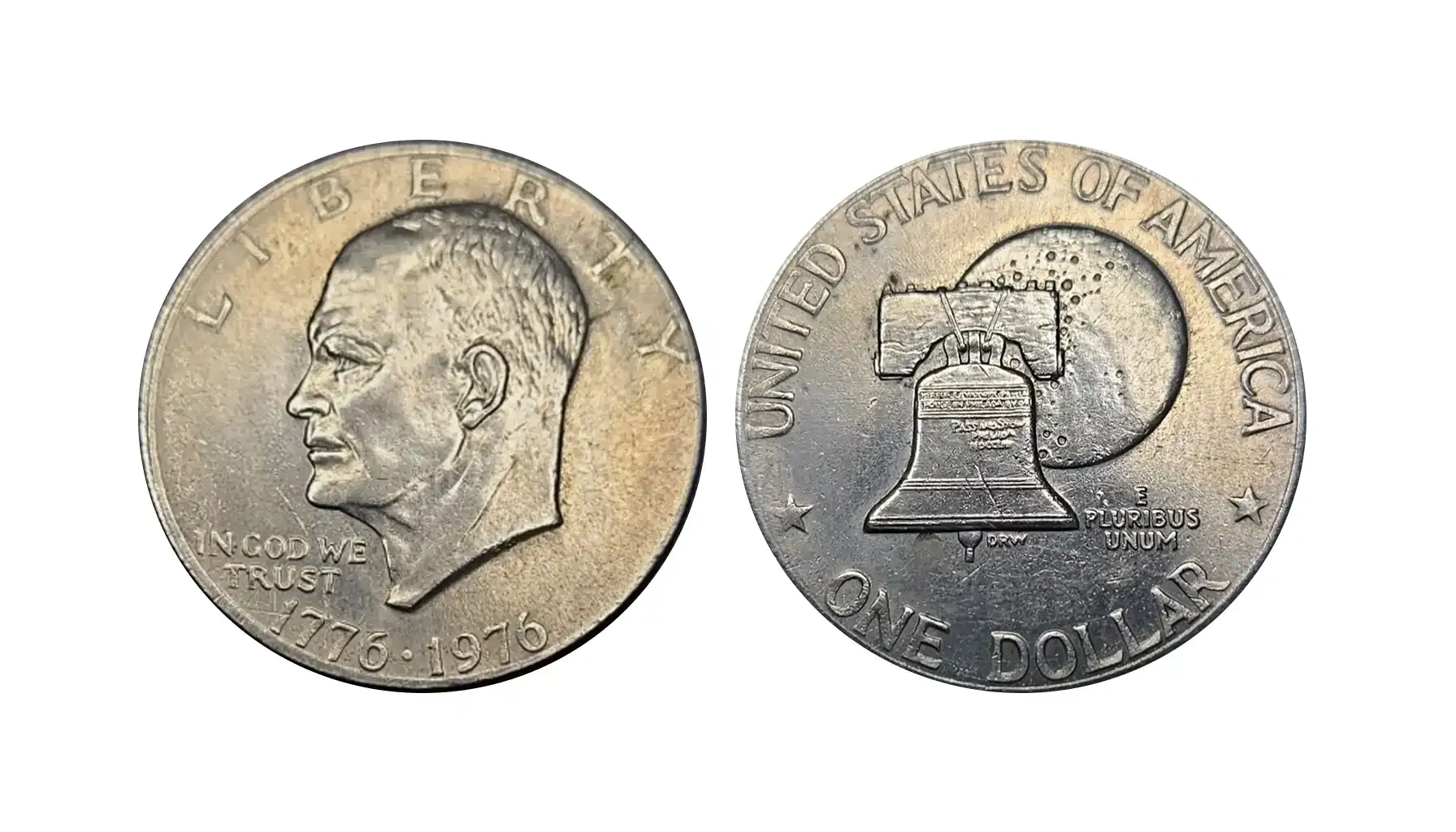
Estimated Value: $1,000
Here is one of the most popular and widespread deviations that always looks peculiar and rich. An off-center strike happens when the coin blank is improperly aligned during striking, causing part of the design to be missing. This is what happened to the Bicentennial coin as well.
How to Identify: Noticeable misalignment where part of the design or lettering is missing or shifted off the surface.
Doubled Die Obverse (DDO)
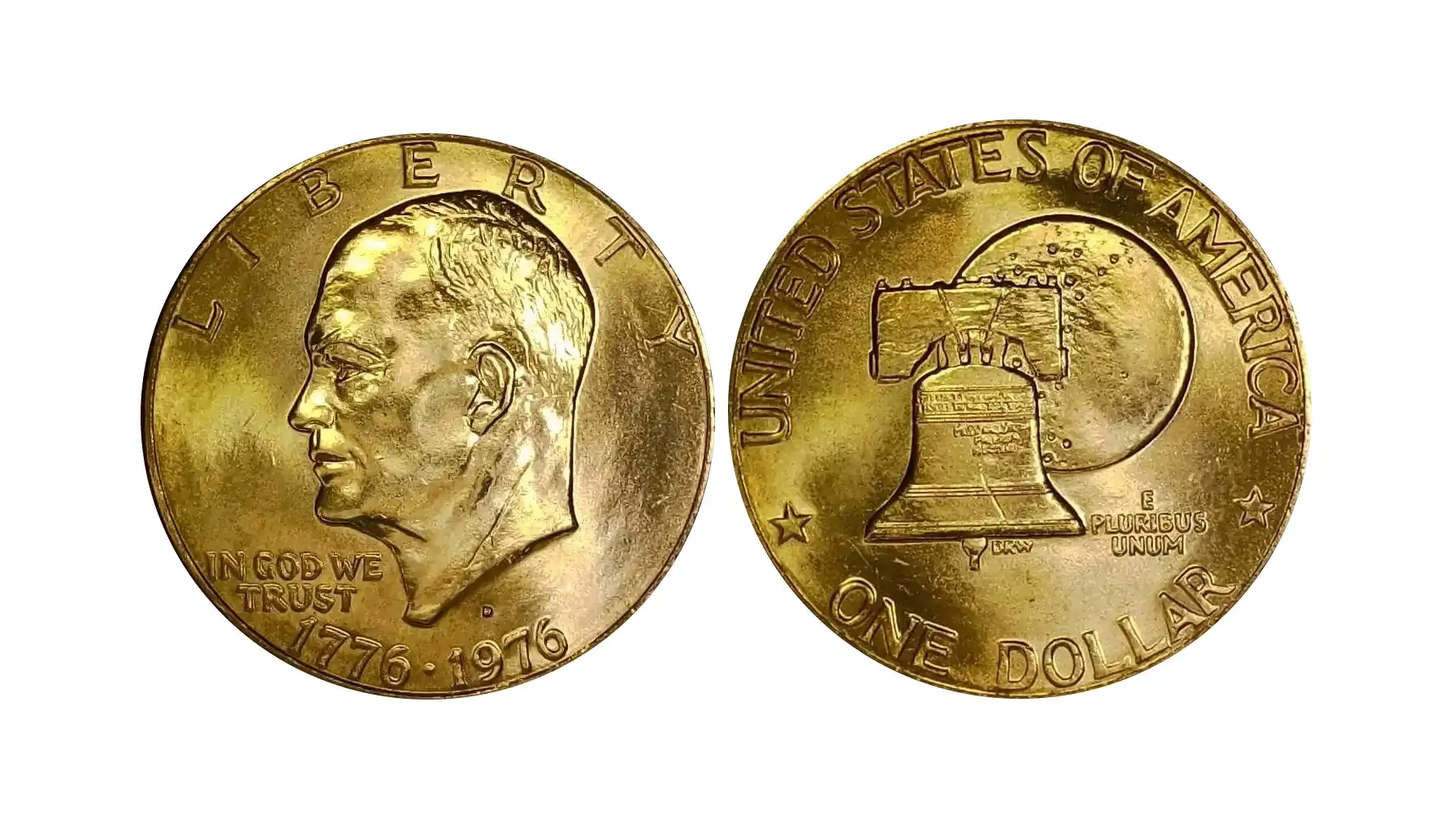
Estimated Value: $269
As a logical continuation of the DDR error, we should take a look at the same flaw but on the other side, in turn. A DDO, as a rule, shows doubling in areas like the date, “LIBERTY,” or “IN GOD WE TRUST”, yet other variations are also possible.
How to Identify: Visible doubling in “LIBERTY” and the date (often)
Struck Through Debris
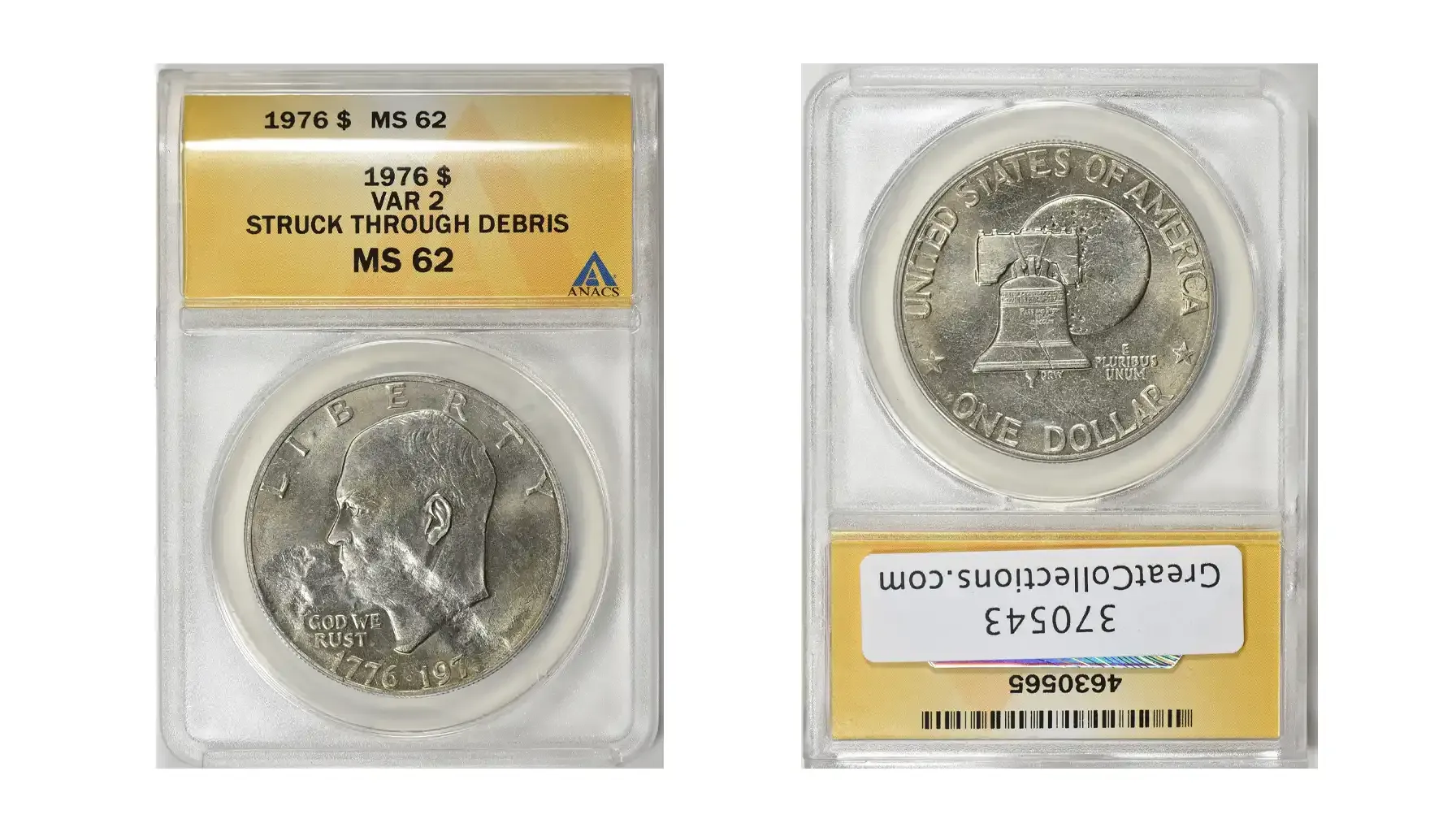
Estimated Value: $80
When foreign material (i.e., cloth, wire, or grease) gets between the die and planchet, there might be left an impression or void on the surface. The more peculiar the impression is, the more valuable the coin gets – this is the rule.
How to Identify: Odd shapes, indents, or texture inconsistencies
The Easiest Way to Find Out How Much Your Coin Costs
Coin collecting can be complicated for sure, and employing additional tools may make this experience even more productive and beneficial. What we can recommend is the Coin ID Scanner app, i.e., a quick and easy solution for numismatic enthusiasts and collectors who wish to know the worth of their collections in an instant.
What is the Coin ID Scanner App?
Coin ID Scanner is a smartphone application that can identify coins by photo and provide comprehensive details, including their value, mint year, mint mark, background, possible defects, and the like. Users may scan any instance with their smartphone's camera and get immediate results. The 1776 to 1976 one dollar coin value, as well as the 1942 wheat penny value, can be established here, too.
Key Features of the Coin ID Scanner
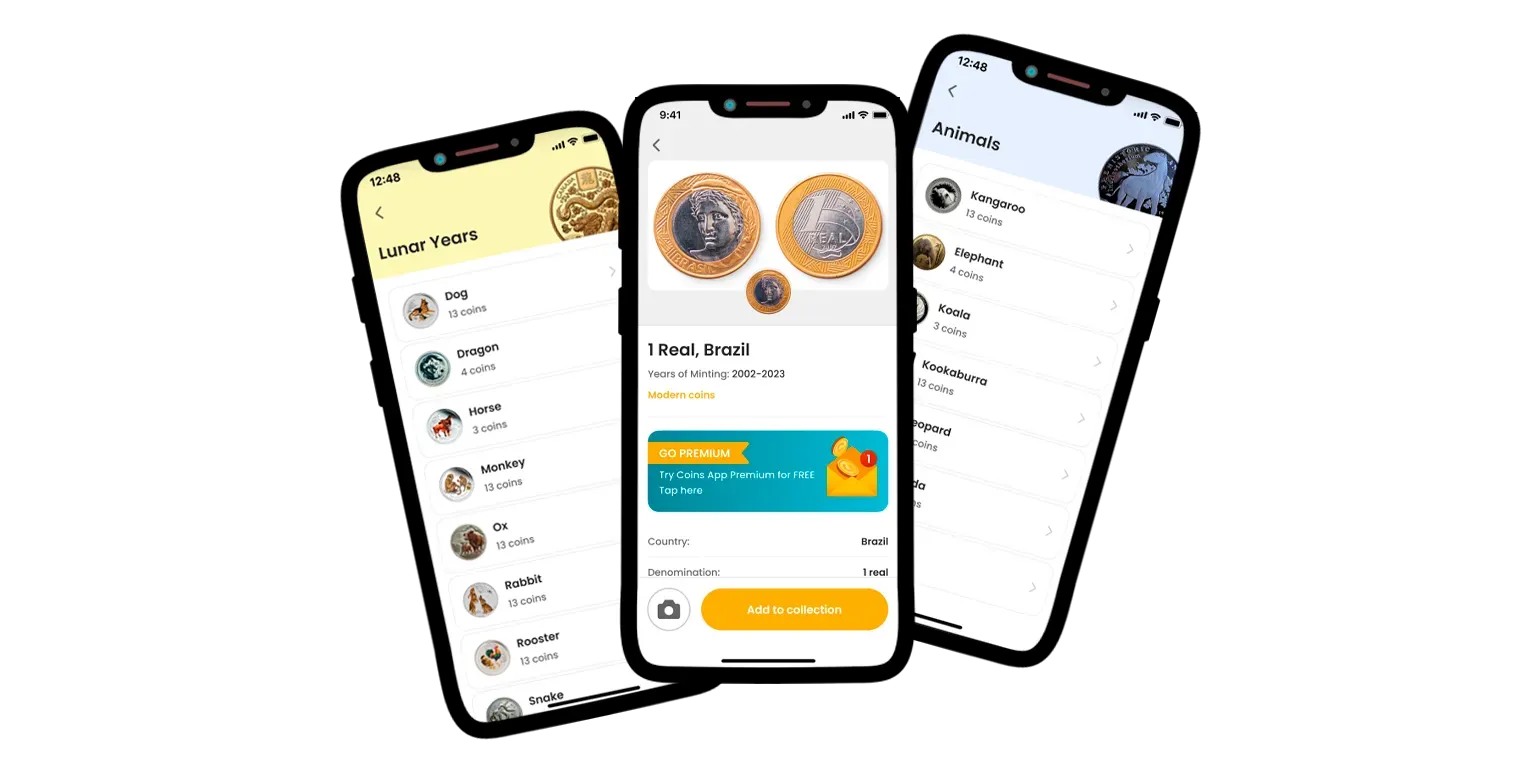
Instant Coin Identification: This program is a clever assistant! It can swiftly identify a coin by taking a picture of it. To provide accurate identification results, the recognition system examines the overall appearance, each feature, text, and design.
Accurate Value Calculations: Besides, the app is free to offer current market prices relevant to your coin's kind, rarity, mint mark, and condition. Accuracy and consistency are guaranteed since valuations are inferred from reliable pricing guides, auction records, and dealer listings.
Comprehensive Coin Information: Sometimes, it feels like Coin ID Scanner is an encyclopedia, for it can accurately reveal historical context, specifications (such as composition, weight, and diameter), and mint information about the instance in your hands.
Grading Assistance: Although the only grading tool to trust is the authorized companies like PCGS or NGC, novices may try to estimate the unofficial value with the use of Coin ID Scanner (visual references and pro tips are guaranteed). Nonetheless, if you wish to obtain a certificate, it is vital to appeal to a reputable grading service only.
Personal Collection Management: Should you desire to catalog and arrange your collection, it is also possible with Coin ID Scanner. Record the values of your coins, keep track of each instance, and add images or descriptions to support your digital storage.
FAQs
Is the 1776-1976 Bicentennial Dollar made of real silver?
Some are, but not all of them. While most were struck in copper-nickel clad for circulation, special collector versions made in San Francisco with an "S" mint mark (and a piece intended for presentations minted in Philadelphia) were produced in 40% silver.
How much is a 1776-1976 silver dollar worth today?
Depending on the condition of a coin, the 1976 silver dollar value may range from $10 and $30, on average. Rare examples can go higher for sure.
What makes the 1976 No-S proof dollar so valuable?
Only one example of this silver proof coin without an “S” mint mark is known to exist, residing in Mr. Spivack’s private collection.
How can I tell if my Bicentennial dollar is a rare error?
Look for doubling (on letters or numbers), filled mint marks, off-center strikes, or unusual textures. To make it even more productive, employ Coin ID Scanner to rest assured that you do not miss anything special.
Why does the coin have two dates (1776-1976)?
The dual date commemorates the 200th anniversary of American independence. To honor this empowering moment in history, the US Mint issued special designs for quarters, half dollars, and dollars that year.
Where is the mint mark on a Bicentennial silver dollar?
It is located on the obverse side, just below Eisenhower’s neck (between the date and the profile of the president). Nevertheless, instances produced in Philadelphia do not bear any mint marks at all.
Are all 1976-S dollars proof coins?
No. Although many 1976-S coins are proof, there are also 1976-S silver dollars meant for regular circulation. The finish and packaging (i.e., coin slab) usually indicate the type it belongs to.
What is the rarest 1776-1976 silver dollar error?
Basically, it is quite complicated to name the rarest error known to exist. However, if we assume that the production of the proof coin in Philadelphia was a mistake, then the 1976 No-S Type 2 silver proof dollar (which should have been released by the San Francisco Mint) is definitely the rarest. Determining the 1976 dollar coin value can be tricky, but when equipped with vital details, it gets much easier each time. Explore the world of coins and find the relics that will never get old.
Related Coin Value Guides:

